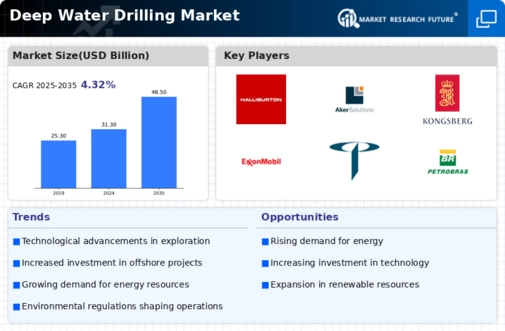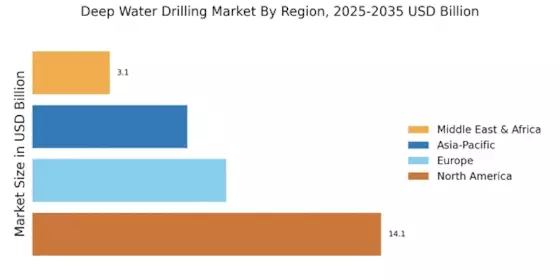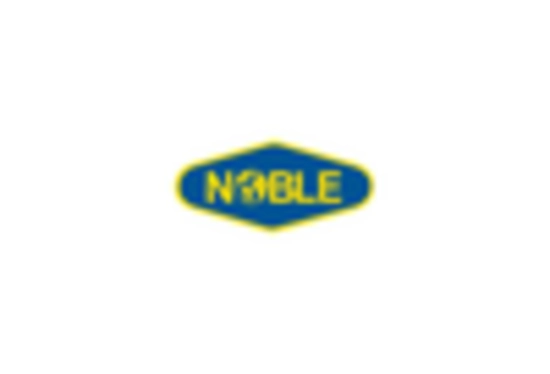Rising Energy Demand
The increasing The Deep Water Drilling Industry. As economies expand and populations grow, the need for oil and gas escalates. According to recent estimates, energy consumption is projected to rise by approximately 30% by 2040. This surge necessitates the exploration of untapped resources in deep water environments, where significant reserves are believed to exist. Consequently, oil and gas companies are investing heavily in deep water drilling technologies to meet this demand. The Deep Water Drilling Market is thus positioned to experience substantial growth as companies seek to capitalize on these opportunities, potentially leading to advancements in drilling techniques and equipment.
Geopolitical Tensions
Geopolitical factors are a significant driver of the Deep Water Drilling Market. Tensions in oil-rich regions can lead to fluctuations in oil prices, impacting investment decisions in deep water drilling projects. Countries with rich offshore reserves may experience increased interest from international oil companies seeking to secure access to these resources. Additionally, geopolitical stability can influence the regulatory landscape, affecting operational feasibility. For instance, regions with stable governance may attract more investment, while areas with conflict may deter exploration efforts. As geopolitical dynamics evolve, the Deep Water Drilling Market must remain agile, adapting to the shifting landscape to capitalize on emerging opportunities.
Regulatory Frameworks
The regulatory environment significantly influences the Deep Water Drilling Market. Governments worldwide are implementing stricter regulations to ensure environmental protection and safety in offshore drilling operations. Compliance with these regulations often requires companies to invest in advanced technologies and practices, which can be costly but necessary for sustainable operations. For example, regulations concerning emissions and waste management are becoming more stringent, prompting companies to adopt cleaner technologies. This shift may lead to increased operational costs in the short term; however, it could also drive innovation and efficiency in the long run. As a result, the Deep Water Drilling Market must navigate these regulatory challenges while striving for sustainable growth.
Technological Innovations
Technological advancements play a crucial role in shaping the Deep Water Drilling Market. Innovations such as advanced drilling techniques, automation, and real-time data analytics enhance operational efficiency and safety. For instance, the introduction of remotely operated vehicles (ROVs) and autonomous underwater vehicles (AUVs) has revolutionized underwater exploration and drilling processes. These technologies not only reduce operational costs but also minimize environmental risks associated with deep water drilling. The market is witnessing a shift towards more sophisticated equipment, which is expected to drive growth. As companies adopt these innovations, the Deep Water Drilling Market is likely to see increased investment and development, fostering a competitive landscape.
Investment in Renewable Energy
The transition towards renewable energy sources is influencing the Deep Water Drilling Market. While the focus on sustainability is growing, the demand for oil and gas remains robust, particularly in regions where renewable alternatives are not yet viable. Investment in deep water drilling is seen as a necessary step to bridge the gap between current energy needs and future sustainability goals. Companies are increasingly looking to balance their portfolios by investing in both fossil fuels and renewable energy projects. This dual approach may provide the financial stability needed to support ongoing deep water drilling operations. As such, the Deep Water Drilling Market is likely to adapt to these changing dynamics, potentially leading to innovative solutions that align with both energy demands and environmental considerations.


















Leave a Comment